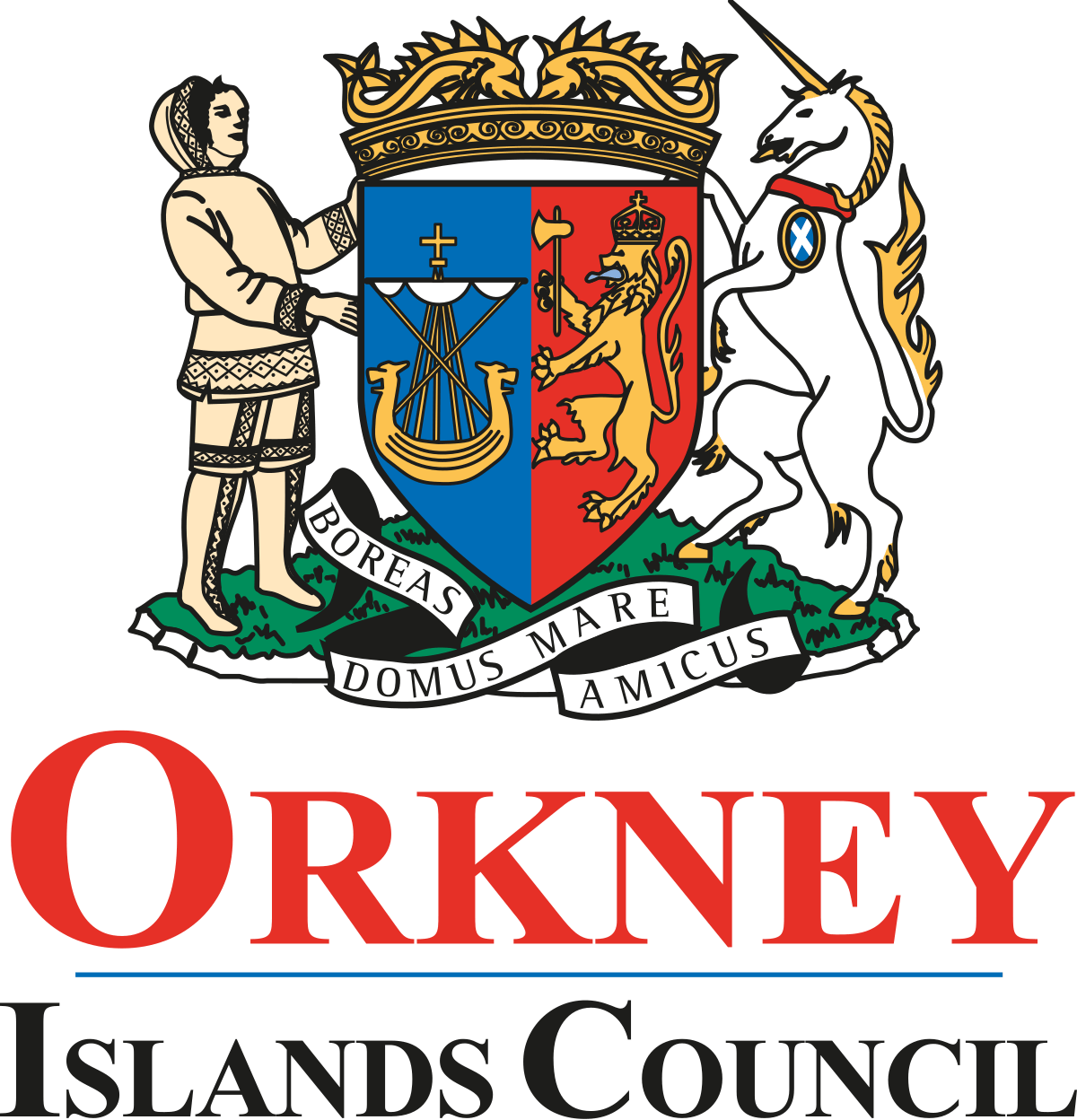Can you give us an overview of your team at Orkney Islands Council?
I’m Andrew Kemp. I have around 20 years of experience managing websites. I’ve worked in both the public and private sectors. I moved to the council two years ago as a project officer, working in the improvement team. Since COVID-19, I’ve been on secondment to the website team.
We’re a relatively small council, with two of us on the website team. We’re part of a wider communications team of six. My assistant Julie Murphy takes care of the content, while I’m in charge of the more technical aspects.
The rest of the team is busy with communications and PR but I want to bring them more on board with checking grammar, spelling, and other content in our CMS, using Silktide.
What are your main challenges?
We still have to do everything that a regular-sized council does but with fewer resources. We also have to look after a lot more websites, for example, the ferry services and flights to and between the islands.
All this means that everyone’s time and resources are very restricted. So this brings us to Silktide which really helps us save time and makes our workload easier. But it also enables us to perform at the same levels as those councils with more resources.
Eventually, we’d like to use Silktide to work on websites that aren’t directly under our control. With Silktide’s accessibility testing, we’re able to prove these need some work.
Ideally, we’ll reach a point where everything is centrally managed but still allow people the control to manage their own content.
Were you using any web monitoring tools before Silktide?
Yes. We joined Silktide in December 2020. When our contract came up for review, it coincided with the GDS audit letter we received. But this gave us the impetus for the high-level directors to ask how we were dealing with accessibility.
And this gave me an opportunity to review the tools we were using and our processes.
The user interface in Silktide really swung it for us. It needed to be easy to use because we’re a small team and haven’t got time to learn new software. What I really liked is that you can delve right into the accessibility reporting, and visually see exactly where the issues are in the Inspector.
I didn’t feel like I was getting that from our previous provider.
Was a11y not a focus previous to the deadline?
Oh, it was. It was being done pretty well even before the deadline – we’ve been looking at accessibility for a number of years.
Now that our accessibility is much better than it was, our next focus will be to refresh the site and make the usability and visuals better.
The link that Silktide had with Socitm was our first route to finding out about you. And the free accessibility reports you give to Socitm members through the Index were really useful to us.
Let’s talk about the accessibility work that you did.
Well, there wasn’t a lot of structure to the project. But we just dove into the issues that Silktide had found and between the two of us concentrated on the huge amount of broken links and other content issues.
The previous supplier had that functionality but because the user interface was so bad it just made it really difficult to find any of them.
So Silktide enabled us to do it much more quickly.
I’ve been looking at the designer and developer areas in Silktide and really just making the code changes myself (for all the things under my control).
And then for anything outside that, it’s been really useful to send to our supplier the Silktide reports. And they were also interested in Silktide as well so they also found the issue list useful.
Our CMS supplier hosts and takes care of the day-to-day management of the website. They’re pretty quick at fixing things quickly and good at communicating.
I can do most of it myself with code changes. But there’ll be other councils that have people with no coding knowledge. That’s why splitting up the issues by role in Silktide is really useful.
I find Silktide to be very addictive. Once you start going up the percentage score, you want to keep improving. Especially with the Index available.
We’re a really small council but we’ve still got around 3,500 web pages. A proportion of these are fairly redundant now and will eventually be removed. Silktide helps us find them.
We use online forms over PDFs whenever possible.
We’re going to get a lot more contributors trained on our content management system. We’ll be using the Silktide accessibility training and take them through the reasons why their work affects people.
How was the process of buying Silktide?
I spoke to Chris and had the demo. It was all pretty easy actually. I had some convincing to do on my side, so it was useful to be able to gain enough information to be able to write a report. At the same time, Silktide was flexible with both the timing and the price.
As a smaller council, we have the same functionality as bigger councils but with fewer resources. But you were able to adapt, give us the correct information, and help me present it to my management team.
It didn’t take long to pick Silktide up at all. I just got stuck in and started using it. I didn’t even do any of the training. But that’s just a testament to how easy it is to use.
Even our non-technical members have just gone in and found things to fix and find their way around.
The side of the training in Silktide which explains the impact of poor accessibility on our users was really valuable though, so I made sure people were aware of it.
While delving into some of the minor issues we’ve been looking at, we had our SSL certificate flagged by Silktide. Essentially the page wasn’t being redirected correctly to the HTTPS versions.
So although superficially it looked like it was working, actually, the SSL certificate itself had an issue. We’d never have found it without Silktide.
Our SSL supplier agreed and fixed the issue. So some of these more spurious errors are really useful to know about and fix.
How has your productivity improved?
I can categorically say that we’d never have got as far as we have in terms of accessibility without Silktide in the time available to us.
It would have taken us a lot longer.
You can’t see or know about some of the screen reader issues without testing them yourself. So the issues raised here by Silktide were really useful. For example, the Skip to Content link – we didn’t have one and I didn’t know about it.
There was a big focus on mobile accessibility during our 2019 redesign of the site by my predecessors. Silktide did find a few issues with scrolling and relative text sizes on some of our mobile pages.
There were also hundreds of spelling errors that you picked up so we’ve worked through those.
Once I’d worked through the big-ticket items I started working on the much smaller issues, and that’s my current focus.
How would you describe your process prior to using Silktide?
It was difficult to get to the bottom of issues before using Silktide. We knew there were issues but being able to find out where they were and solve them was a challenge.
Sometimes it’s not as easy as looking at the page as some issues are buried in JavaScript or CSS, or elsewhere. So being able to visually see where those are is much easier with Silktide.
It’s intuitive and easy to use.
What’s your advice to others who might be considering Silktide?
Silktide gives you the ability to get a good overview of your whole site. Not just in accessibility, but in content and user experience.
You’ll be able to fix a lot of it pretty quickly within the first few months of using Silktide.
Was the investment worthwhile?
Yes, because we’re providing a much better user experience, not just for people with disabilities but for everyone.
Usability is the key to Silktide. It’s so intuitive. It’s easy and it saves me time.
We’ve got fewer resources than most other councils, but we work just as hard. We’re now in the top 8 in the Silktide Index for accessibility in UK Councils with around 3,500 pages of content. That’s not far off from much bigger councils in terms of the size of the site.
This is just the start of the Council’s improvements to the whole website. It’s always an ongoing process. We’re really happy with our progress on accessibility and now we’re looking to focus on usability as a whole.
We’ve got the tools in place to enable us to improve even more during the next design process.
Ready to get started?
Request a demo
